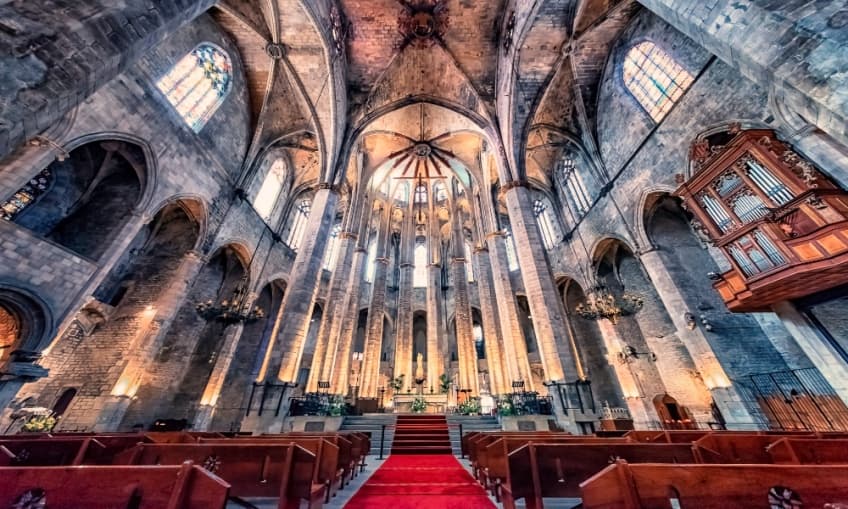
Basilica of Santa Maria del Mar (Barcelona)
According according to some historians, this minor basilica was built on the ruins of a Roman coliseum. Its construction lasted between 1329 and 1385, after a series of successive misfortunes including the burning of the scaffolding in 1330. A later reconstruction followed the 1428 earthquake, which damaged its rose window.
As with many other great temples of antiquity, over the centuries the original architectural configuration underwent changes from its original Gothic design. Renaissance, Baroque, and even Modernist elements were added, including a raised passageway during the 17th century and a new late-Baroque altar in 1783. This included 12 centred, monolithic columns.
The first thing to appreciate when looking at the exterior of the architectural complex is that it is a solid, robust and compact construction. However, when one is looking at its interior, its design gives the impression of fragility due to the mouldings, cornices and surfaces that seem to want to avoid the sensation of the enormous height of the set.
The design of this basilica is traditional, with three naves made up of four branches with a half-branch presbytery and a heptagonal polygon covered with a ribbed vault, as well as an ambulatory without a transept. Something striking is that the pillars of each nave are widely spaced, which seems to create the false sensation of a single nave – something very typical of the French Gothic style.
This impressive work of enormous artistic and patrimonial value was declared an Asset of Cultural Interest in June 1931.
As with many other great temples of antiquity, over the centuries the original architectural configuration underwent changes from its original Gothic design. Renaissance, Baroque, and even Modernist elements were added, including a raised passageway during the 17th century and a new late-Baroque altar in 1783. This included 12 centred, monolithic columns.
The first thing to appreciate when looking at the exterior of the architectural complex is that it is a solid, robust and compact construction. However, when one is looking at its interior, its design gives the impression of fragility due to the mouldings, cornices and surfaces that seem to want to avoid the sensation of the enormous height of the set.
The design of this basilica is traditional, with three naves made up of four branches with a half-branch presbytery and a heptagonal polygon covered with a ribbed vault, as well as an ambulatory without a transept. Something striking is that the pillars of each nave are widely spaced, which seems to create the false sensation of a single nave – something very typical of the French Gothic style.
This impressive work of enormous artistic and patrimonial value was declared an Asset of Cultural Interest in June 1931.
Location
Religious Buildings in Barcelona
Civil Buildings in Barcelona
Museums in Barcelona









